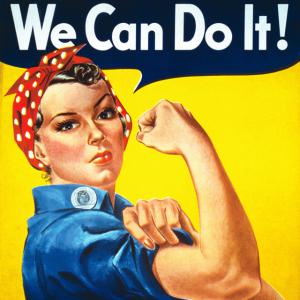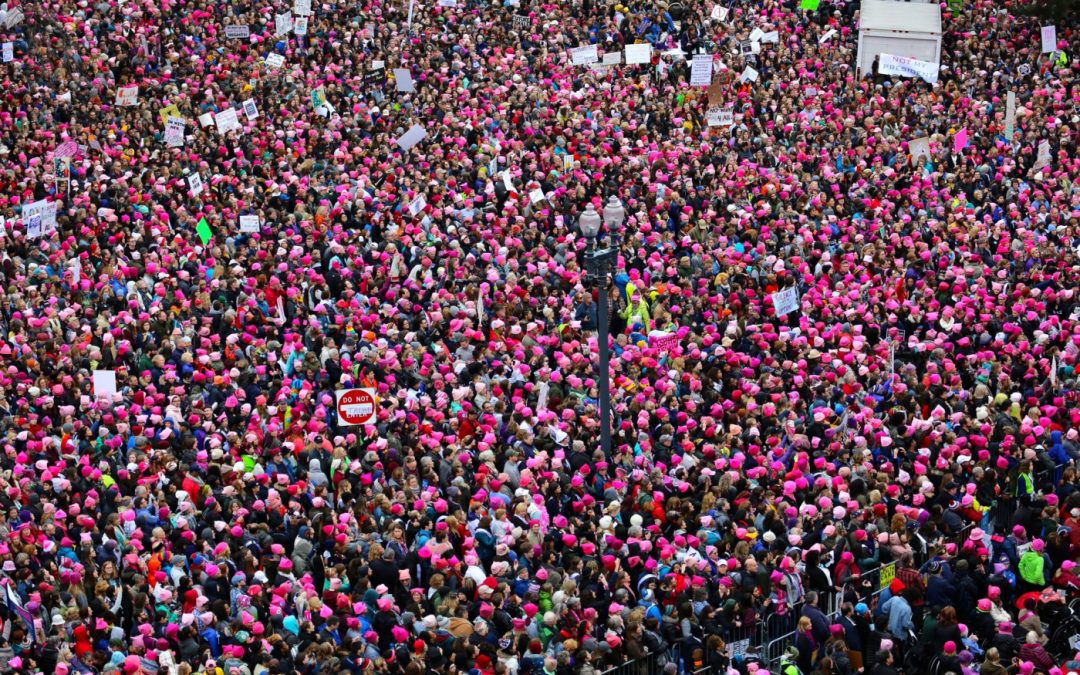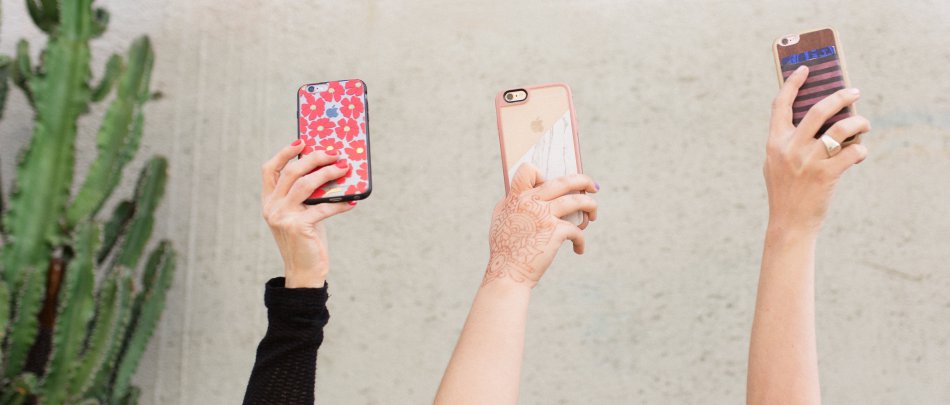
by Nicole | Mar 29, 2017 | News, Published, VINAZine
Gaslighting is a term that has gained traction in recent months (read: Teen Vogue’s poignant article on the subject). But the tactic has been around, plaguing its victims, for much, much longer.
Psychology Today says, “Gaslighting is a manipulation tactic used to gain power” by making the victim question their reality. It’s a form of slow brainwashing done by narcissists, as well as dictators or cult leaders, who often fall into this category themselves. Yikes!
As scary as the thought of someone brainwashing an entire nation is, gaslighting on a personal scale is also very real and can be just as scary for the victim. Gaslighting has even been dubbed a form of emotional abuse. There are several techniques a person can use when gaslighting someone. Some red flags:
The person is telling obvious lies. The reason? To make you unsure of yourself, what you know to be true, and question who you really trust. By lying to you, the person creates confusion and uncertainty in order to more easily manipulate you.
Denial. The perpetrator may try to convince you they never said or did something they blatantly said or did. This is just another way the person can get you to buy into a false, carefully calculated idea of what is going on around you.
Projection. If you are being told you are the one who possesses their flaws, this is called projection. For example, they’ve been known to cheat, but they then accuse you of cheating. They’re projecting their faults onto you to distract you from their own bad behavior.
They tell you you’re the crazy one. They might as well be trying to convince you the sky is green. If they are dismissive and say things like, “No one will believe you” when they act abusive or controlling, that’s a sure warning sign.
Now that we know how to spot it, how do we protect ourselves and our vinas from falling victim to gaslighting?
Trust your gut. Has your intuition ever failed you? Don’t let go of that strength – listen to it, and believe it.
Maintain your perception of reality. The sky isn’t green; you know it’s blue, so don’t back down. If you know something to be true, hold onto it.
Cultivate a strong support system. Don’t let the gaslighter isolate you from your friends and family. Surround yourself with people who are honest with you, who build you up, and who support you through life.
If you think you’re being victimized through this tactic of manipulation, don’t doubt yourself or what you know to be real. If you have any tips to share with our readers on how to stay strong and identify gaslighting before it can affect you or someone you love, please share in the comments!
This post was originally published on the VINAzine <3

by Nicole | Mar 11, 2017 | Published, VINAZine
You may not have read about these ladies in high school!
It’s Women’s History Month, vinas! We’re celebrating all the brilliant women who have made their mark over the course of our world’s history. I want to share with you some incredible women that you may not have heard about but have made a huge impact on today’s world. Let’s get to it!
ADA LOVELACE
I’m willing to bet most of us consider computers to be a late 20th century technology, but would it blow your mind to know they actually got their start in the early 1800s?
Ada Lovelace became known as the world’s first computer programmer. She was born to Lord Byron, a well-known poet who was determined to have his daughter excel in the studies of science and mathematics instead of following his footsteps into the arts. When she was a teenager, she met Charles Babbage, who we know today as the father of computers. Babbage created the Difference Engine (a device to create math tables automatically and without errors), then the Analytical Engine. In 1842, Babbage gave a lecture on the latter and commissioned Lovelace to translate the lecture from French to English. She added her own notes to the transcript, proving she knew the machine just as well as Babbage. In her notes, she created the first algorithm on paper.
She correctly predicted Babbage’s Analytical Engine would compose music and be quite useful to science. More than a century down the line, it was a reality. It’s hard to imagine where the world would be without Lovelace’s brilliant STEM mind.
WILLIAMINA FLEMING
Modern astronomy was revolutionized by a young woman name Williamina Fleming, who emigrated to the United States (Boston, to be exact) with her husband in the late 1800s. Shortly after arriving, he left her while she was pregnant. She found work as a maid for a Harvard College astrophysicist, Edward Charles Pickering.
The story goes: Pickering was tired of his male assistants not being able to live up to his expectations and he would complain, loudly, that his “Scottish maid could do better” than they could. And well, he was right.
Pickering taught Fleming how to analyze stellar spectra (the pattern of lines created when a star shines through a prism) and she eventually became best known for her work doing so. She discovered, among the thousands of stars she catalogued, the Horsehead Nebula in 1888 and many other significant celestial bodies. Before her death in 1911, she published multiple studies on her star and white dwarf discoveries and was awarded a medal for her discovery of new stars.
JANE ADDAMS
This woman did it all! Jane Addams was the founder of one of the first social settlements in Chicago and is known today as the “Mother of Social Work.” Addams worked hard to help the poor, fought for women’s rights and peace, and gave public lectures around the country in an attempt to teach those who could not afford traditional means of education.
Addams’ extensive resume includes social activist, author, leader of suffrage in the early 1900s, community organizer, philosopher, and advocate for peace. She completely changed the sociological practices surrounding social work by instilling a new model of social reform and theory building, instead of just simply visiting with the poor. Her theories became central to the field of social work and are still practiced today.
Some things you may recognize that were a direct reflection of Addams’ impact on the world? Namely, she helped shaped what we know as the United Nations today. Additionally, she founded the Women’s International League for Peace and Freedom, cofounded the American Civil Liberties Union, and was the first woman to win a Nobel Peace Prize, awarded in 1931.
HENRIETTA LACKS
People in the healthcare world may have heard of Henrietta Lacks because of her profound contribution to modern medicine, but for those not in the know…
In early 1951, Lacks went to John Hopkins, the only hospital in her area who would treat black people in the mid-1900s, complaining of a “knot” in her womb. She was pregnant; after giving birth, she suffered from a severe hemorrhage and was misdiagnosed, but that wasn’t discovered for nearly twenty years after the fact. And, it was only discovered because without her consent or knowledge, doctors took samples from her cervix during her course of treatment.
Lacks died of cervical cancer in 1951, but her death was not in vain. Her cells became known as HeLa, the first immortal cell line in the history of modern medicine. HeLa is responsible for some of the most significant medicinal advances in the 1970s – from the polio vaccine to chemotherapy, gene mapping, and even IVF treatments. Had doctors not taken her cells to study, modern medicine may not be what it is today.
KATHERINE JOHNSON
We may know more about her because of the recent award-winning film “Hidden Figures,” but most of us aren’t aware of the women behind the men who got Americans into space. Katherine Johnson was instrumental in space exploration efforts. Known for calculating trajectories and launch windows for early NASA missions, Johnson is an African American physicist and mathematician.
Johnson quite literally worked as a computer, providing calculations for trajectories for many space endeavors, including the 1969 Apollo 11 mission. She also assisted with backup procedures for one moon mission we’re likely all familiar with – Apollo 13.
Now 98, Johnson was recently awarded the Presidential Medal of Freedom by President Obama (one of many awards she has received throughout her lifetime) and has created an everlasting legacy. Without her knowledge and expertise, we might not have had a successful moon landing in 1969.
Have a woman in mind who made a profound mark on history? Tell us in the comments who your historical sheroes are!

by Nicole | Mar 4, 2017 | Beliefs, Life, News, Past Events, Politics, Published, VINAZine
On January 21, 2017 people around the globe came together to march in solidarity for women’s–and human, rights. It may have been initially organized to happen in Washington, D.C., but it soon became a collective phenomenon of cities around the world. Millions marched to make sure our collective voices were heard. And let me tell you- they most certainly were!
Why does the physical act of marching matter? Can it actually create change and awareness? Why yes, my darling vina, it absolutely can. Not only history, but psychology tells us so.
Kimerer LaMothe, Ph.D. recently shared an analysis on why the bodily action of marching matters, claiming, “To march is to move together in time.” LaMothe says that while we may not be moving at the same pace, a group of people moving together is “impossible to underestimate.”
LaMothe talks about “moving with others” in the sense that it creates an awareness and embodies democracy in its truest working form. She states that collective movement,“is about creating the conditions for generating ideas — a rich motley mix within which new visions may form. It is about generating networks of thought, feeling, and shared experience across which actions can travel.”
So why physically march with others? Simply put: to get us together – bodies, voices, and perspectives. To show support for each other align our goals: to keep moving forward. To realize we are not alone.
Moving together with others lights a fire and sparks motivation. Getting large groups of people together for a common purpose helps create a strong presence that can be seen and felt through passion and proximity. We are creating a community that builds us up, makes us strong, shows we’re loud and proud, and it’s undeniably engaging.
Coming together in large numbers like we saw during the Women’s March on Washington is motivating and inspiring. I mean, we’re still talking about it nearly two months later. That fact alone should help us realize that we can actually create change in our country and around the world, just by getting together to support each other and make our voices heard.
(Featured image courtesy Occupy.com)
This post was originally published on the VINAzine <3

by Nicole | Feb 17, 2017 | Featured, Friendship, Life, Published, VINAZine
Before the internet, a girl from Indiana couldn’t fathom making friends with someone from California. Or Australia. Or even someone in her city, without leaving the comfort of her home. My goodness, how things have changed.
Over the last decade, we have witnessed technology evolve right before our eyes – it’s bringing us together, from all corners of the globe. And it’s freaking awesome.
I grew up in a very rural area of the Midwest – back then, we relied on making friends in our hometowns or from neighboring schools through sporting events and after school activities. Until we could drive and get jobs outside our small town, our friend circles revolved around who was in our classes or extra curriculars. But when I was thirteen, the internet finally arrived in my area.
I remember chatting online with people in my area then making plans to meet them when our schools played each other in basketball or football. I was able to make friends outside the small circle of people I knew my whole life, and I loved it. It’s true – I was hooked on making friends with strangers through the computer. Some I’d meet in person, and who are important people in my life still. Some I still talk with online, still having never met them in person.
When I was a kid though, I was teased for chatting online with strangers. People in my class thought I was lame for chatting on ICQ or AIM, but I didn’t care. I loved meeting new people, in person or over a computer. Fast-forward (more than) a few years later… it’s now considered normal to find relationships and meet new friends off the internet based on your common interests. YAAS, FINALLY!
Over the years, I’ve formed wonderful relationships with folks I’ve met online. I’ve had deep conversations with people I’ve never seen before in person through forums and social networking websites. I’ve forged lifelong bonds with some amazing women who I see regularly. When Twitter took off, I joined solely to follow my favorite rockstar… but soon found a community of fans that were just like me. We started talking to each other online through 140 characters at a time, then ended up meeting each other at concerts all over the country. During the times we waited for (an insane amount of) hours together to snag a front row spot to see our favorite band perform, we created meaningful friendships with each other. Some of the ladies I met during that time I speak with almost daily, and they are coming to my bridal shower this spring!
With websites like Twitter to find people who are into the same things you are, it’s so easy to make new friends online. And again, it’s freaking awesome – most women know it’s harder to make friends once they have finished their college years, begin professional careers, or start having children.
Our circles naturally shrink when we grow older, but ladies, I’m here to tell you they don’t have to. The internet makes it SO much easier for us to form friendships with people we wouldn’t meet under what we used to consider normal circumstances. Luckily for all of us, the new normal is making friends online. The thirteen year old me is rejoicing and shouting “see, I told you this would take off!”
This post was originally published on the VINAzine. <3

by Nicole | Jan 27, 2017 | Professional, Published, Resume Writing, Tips and Tricks, VINAZine
Whether you’re looking for a career change or your very first job out of college, we don’t have to tell you how important it is to make sure your resume shines bright like the star you are. If you are looking for ways to make sure your resume stands out against the ever-growing sea of applicants, check out these tips below for some inspiration!
DO A LITTLE TAILORING
You may be applying for multiple jobs at one time, so change up certain aspects to better customize the resume for that particular job. For example, you can reorganize the order of your professional skills. Whether you’re going after a writing gig, a retail management position, or something at a Fortune 500 company, be sure to tailor your resume respectively and include the things relevant to that industry at the top of the list.
KEEP IT TRENDY
Trends for resumes are constantly changing, so make sure you’re ahead of the curve by doing a little research. Hit up Google and LinkedIn to find articles and sources on the latest and greatest resume tips. Some quick ones for keeping it fresh in 2017 are:
- Forego the objective and replace it with a short biographical profile. A quick statement can be a few lines about you and your experience, as well as what you are seeking professionally.
- Avoid using caps. (SEEMS A BIT SHOUTY, DON’T YOU THINK?)
- Stick to using no more than two complementary fonts. This is a classic design trick that helps avoid inconsistency and distraction.
- Make sure it fits on one page. You want to also leave space in the margin to allow the interviewer space to make notes.
MAKE IT MODERN (READ: VISUALLY APPEALING)
Calling all ladies in the visual arts field – show your potential new boss how creative you can be by making your resume pop on the page by using bright colors and graphs. Just make sure it looks good on the screen and in print – print a couple of versions in color as well as in black and white to make sure your information still stands out to your future employer no matter which way they’re viewing it.
Not in the visual arts? Keep it sleek and chic. You can use an online resume builder service, like ineedaresu.me (which is free, babe!), to help you build a gorgeous, modern resume in just minutes.
IF YOU CAN SWING IT, HIRE A PROFESSIONAL (Like me!)
There are many resources out there for hire – you just have to search! Contact a local college or university’s writing center to see if there are any student writing consultants or recent graduates looking for extra work to build their resume. You can also place an ad on Upwork, a popular freelancing website. LinkedIn may also harbor some connections you already have who provide resume or professional writing services.
Even if you aren’t looking for a new job, it’s always a good call to make sure your resume is in tip-top shape should an opportunity swing your way. After all, your next career move may be waiting for you around the corner!
(Feature image via Popsugar)
This post was originally published on the VINAzine. <3
Page 4 of 4« First«...234





